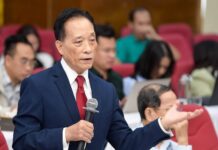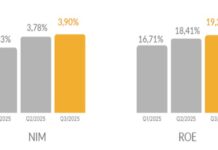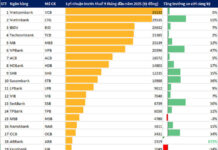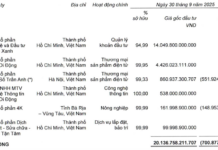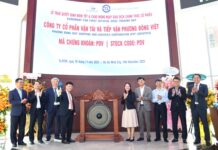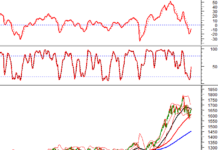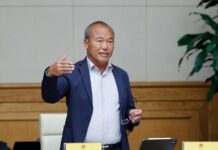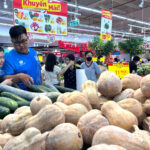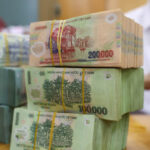In the upcoming episode of the dialogue program “Building the Nation – Proud Vietnam,” the central figure is not a technology engineer or a financial expert, but a craftsman and entrepreneur who has dedicated decades to the jewelry trade. Mr. Vũ Mạnh Hải, a distinguished artisan and founder of Bảo Tín Mạnh Hải, appears in the studio. He is a rare representative of a traditional craft village who has stepped beyond the family production model to build a business-scale brand. His presence raises an intriguing question: Can culture and traditional crafts become a pillar of the economy in the future?
The upcoming broadcast promises to offer a unique perspective on economic development rooted in Vietnamese identity. Unlike typical discussions focused on policy or technology, the conversation with Mr. Hải begins with everyday elements: the hands of craftsmen, kilns, and handcrafted products tied to local culture. However, as the dialogue deepens, it becomes clear that this is not just about preserving tradition but also about a rational approach to economics.

Handicrafts: A Potential Driver of Economic Growth
One of the program’s key themes is the government’s goal of 1 million private enterprises by 2030. While most viewers associate this target with fast-growing sectors like technology, logistics, or finance, Mr. Hải offers a fresh perspective. With over 5,000 craft villages, the handicraft industry could significantly contribute to this goal if properly transformed. During the show, he explains why many traditional production units can evolve into small and medium-sized enterprises and identifies the missing links preventing this potential from being fully realized.
In this episode, Mr. Vũ Mạnh Hải also discusses the labor situation in the jewelry and handicraft sector, a topic rarely covered in the media but crucial for understanding how Vietnamese traditional crafts can expand globally. Audiences will be surprised to learn that many Vietnamese artisans work for major international jewelry corporations. The question arises: What can Vietnam do to attract these talents back to build a domestic industry? Mr. Hải provides specific insights into the conditions needed to establish a sophisticated jewelry value chain, from design to export.
Digitizing Traditional Businesses: Modern Strategies for Preserving Crafts
Another highlight of the upcoming episode is Mr. Hải’s journey in digitizing his business. Despite starting as a handicraft enterprise, Bảo Tín Mạnh Hải has implemented electronic traceability, standardized processes, and synchronized sales experiences across its entire system. This serves as a clear example of how traditional crafts can embrace technology without losing their cultural identity. The discussion also explores how information technology can enhance productivity, reduce errors, and standardize operations in the handicraft sector, an area often perceived as resistant to change.

The program also focuses on branding, a common weakness among craft village enterprises. The host poses a familiar yet challenging question: Why do Vietnamese handicrafts, despite their beauty and intricacy, rarely produce globally recognized brands? Mr. Hải identifies the root cause as a mindset still focused on individual production and a lack of strategic brand storytelling. According to him, branding is not just about aesthetics but about conveying cultural depth through store ambiance, service style, and product narratives. The episode reveals his insights into the critical elements needed to elevate Vietnamese handicraft brands in an increasingly competitive global market.
Another notable segment is the discussion on the role of culture in economic development strategies. This is the most emotionally charged part of the recording. Drawing from his own industry, Mr. Vũ Mạnh Hải broadens the perspective, emphasizing Vietnam’s vast cultural resources. However, he argues that this pillar is still undervalued in the national economic model. He presents his view that culture, when systematically organized and supported, can form the foundation for creative enterprises, experiential tourism, and related service industries, provided there is a clear national strategy.
The episode’s key takeaway is how a craftsman perceives economics. Instead of relying on growth charts or complex management terms, Mr. Hải demonstrates that cultural value, when systematized and properly supported, can drive genuine breakthroughs. The next episode of “Building the Nation – Proud Vietnam,” featuring distinguished artisan Vũ Mạnh Hải, will air soon on HTV9 and VCCorp’s online platforms. Audiences can anticipate sharp yet relatable insights into Vietnamese craft villages, building identity-based businesses, and creating economic value from culture—a promising approach as Vietnam aims to leverage its unique strengths for economic development.
Expert: Ho Chi Minh City Poised for Growth Cycle Mirroring Seoul’s Success
According to Mr. Nguyen Quoc Anh, Deputy General Director of Batdongsan.com.vn, the new Ho Chi Minh City is on the cusp of a large-scale development phase, as its current state closely resembles that of Seoul before 1982, a city that now generates over 56% of South Korea’s GDP.
Empowering Financial Growth: Banks Secure Capital Flow for Economic Development
Credit recovery is soaring and is projected to sustain robust growth, fueled by substantial capital demand from the retail sector and businesses, as well as the ripple effects of public investment. This momentum is pivotal in achieving the ambitious GDP growth target of 8% by 2025. The banking sector continues to strengthen its financial capabilities, solidifying a robust foundation to support its growth strategies and meet the economy’s capital needs.
Vietnam’s Economy Sets New Records, Ushering in an Era of ‘Dream Big, Achieve Bigger’ on the Cusp of the ‘Age of Ascent’
After 40 years of Renovation, Vietnam has entered the “Era of National Aspiration,” a spirit affirmed by the 13th National Congress and materialized through seven pivotal resolutions issued by the Politburo in 2025. Spanning international integration, private sector development, education, healthcare, and energy, these directives are vividly reflected in every economic indicator: growth surpassing expectations, macroeconomic stability, deep global integration, and an unwavering drive to surge ahead.







